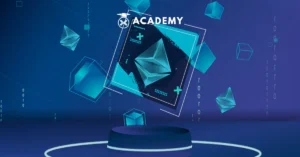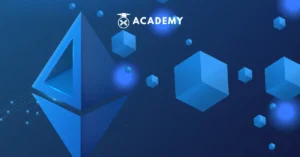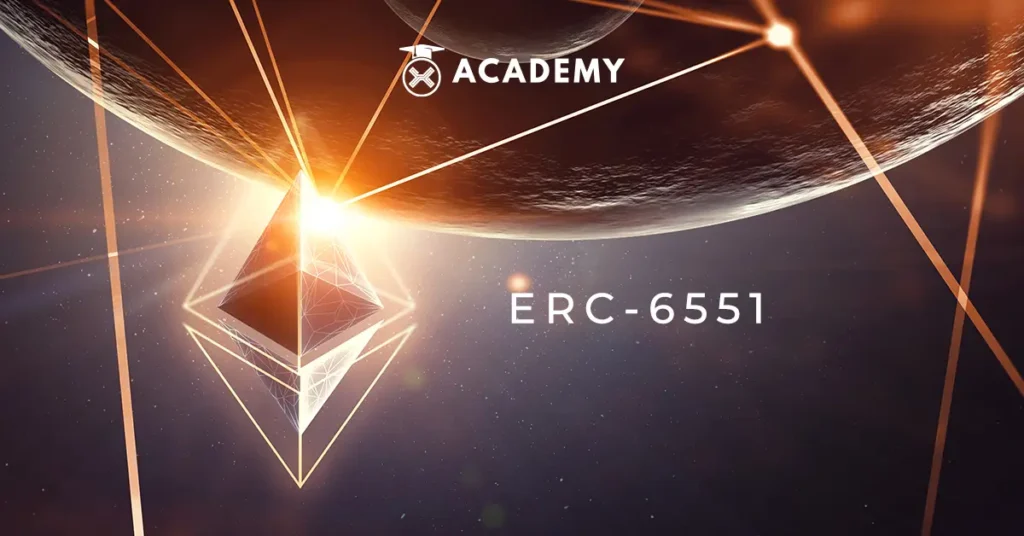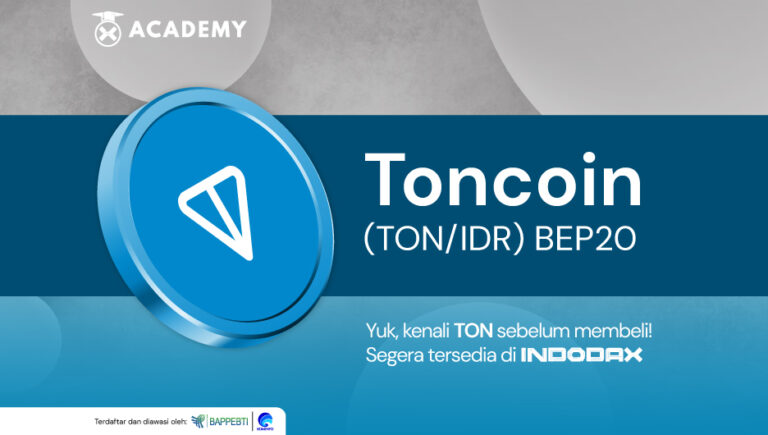ERC (Ethereum Request for Comments) is a set of standards that allow developers to introduce new functionality into the Ethereum ecosystem.
These ERC standards act as protocols for tokens and smart contracts that ensure interoperability and uniformity among applications built on Ethereum.
ERC-6551 is one of the ERC standards that specializes in defining non-fungible tokens (NFTs) in the Ethereum ecosystem. ERC-6551 provides a standardized framework for creating, managing, and transferring NFTs within the Ethereum blockchain.
NFT Standardization
Quoting medium.com/coinmonks, token standards are guidelines on how to write token smart contracts, the functions that should be implemented, and how to store data so that wallets, explorers, and DApps (decentralized applications) can work with them directly. These standards are often called ERCs.
The most popular token standard is ERC-20 – Ethereum Request for Comment 20. Fungible token smart contracts generally store only two values: the address that owns the token and the number of tokens they own. For example, Alice’s address has 700 TOKEN tokens.
The second most popular standard is ERC-721 for non-fungible tokens – NFTs. These contracts store an address, a unique token ID, and the number of tokens. For example, Bob’s address has 1 TokenizedApe token with ID 001.
Developers can expand token possibilities and explore new use cases by modifying the standard while maintaining core functionality.
Tether added a “blacklist” function to ERC-20 to freeze USDT on malicious addresses. The RMRK project also modified ERC-721 so that it can have another NFT.
However, there are problems with simply modifying standard contracts. First, non-standard specialized functions require specialized handlers.
Secondly, developers cannot modify smart contracts already implemented, so to implement the packing functionality into BAYC, they would have to implement it again.
ERC-6551 Specification

The various features and specifications outlined in ERC-6551 are as follows:
- Unique Identification: Each NFT created generates a unique identification that can be studied and verified directly within the Ethereum blockchain.
- Additional Metadata: ERC-6551 allows storing additional metadata related to the NFT, such as descriptions, images, or any other information that the creator of the NFT wishes to include.
- Ownership and Transfer: The standard establishes a clear protocol for transferring ownership of NFTs from one holder to another. NFT transfer transactions are transparently recorded on the blockchain.
- Interaction with Other Smart Contracts: ERC-6551 allows NFTs to interact with other smart contracts within the Ethereum ecosystem, enabling more complex functionality and deeper integration with decentralized applications (DApps).
- Security and Protection of Ownership: The standard specifies the security measures required to protect the ownership and integrity of NFTs from attack or manipulation.
Technical steps to create an NFT include determining the metadata to be included, creating a smart contract following the ERC-6551 standard, and assigning a unique identification to the NFT created.
The NFT transfer process involves creating a transaction that moves the ownership of the NFT from the current holder to the new holder by updating the ownership record within the smart contract.
Meanwhile, NFT management involves monitoring and maintaining the metadata associated with each NFT and updating or modifying the smart contract if needed to accommodate changes in features or functionality.
Furthermore, it is important to implement proper security measures, such as thoroughly tested smart contracts, security audits, and best practices in privacy key management.
Benefits of the ERC-6551 Standard
Here are some of the benefits of the ERC-6551 standard that are important to know, including:
NFT Compatibility
By utilizing Token Bound Accounts (TBA), you can combine your NFTs with other related assets (NFTs, tokens, attributes, etc.) into a single profile. This makes it easier to manage and transfer assets across multiple platforms.
Before TBA, all NFT assets collected, for example, in a game, would be stored as separate tokens in your wallet.
Now, thanks to TBA, you can have a kind of inventory that allows assets associated with a game to be transferred into the wallet. This results in a smoother user experience.
Identity on the blockchain
Currently, your wallet is a representation of your digital identity. However, with the use of TBA, each NFT you own has its own identity.
As such, your NFTs can interact with DApps independently, without dependence on the wallet that holds them. This can potentially affect the value of your NFTs.
Examples of systems that can utilize TBA include token airdrops, loyalty programs, and in-game rewards. In the future, it may also enable the adoption of loan rating systems that can improve the efficiency of lending protocols.
NFT Proofing
NFTs do not provide comprehensive information on transaction history or asset utility other than proof of ownership.
However, with TBA, all this data is stored. This becomes especially useful for collectible NFTs. This allows NFT buyers to verify their origin thoroughly.
Interaction with dApps
Through ERC-6551, NFTs can independently interact with various other DApps. This results in increased value and the ability of NFTs to change their appearance.
Contrary to previous NFTs limited to proof of ownership, NFTs using this standard have a much broader and dynamic function.
Implementation and Use of ERC-6551

So, how can ERC-6551 be used in crypto projects? There are many possible use cases for ERC-6551, among others:
- A separate wallet to store a specific portfolio or collection of NFTs
- A loyalty card that receives bonuses, airdrops, and rewards and retains them if sold’
- A decentralized ID that stores users’ encrypted data or proof of passing KYC to pass compliance quickly
- An NFT that represents a role-playing character that has shields, weapons, and other things as NFTs
- An NFT that consists of multiple NFTs that it owns
- A social media account surrogate that stores user posts and photos
- A separate wallet that collects rewards from tokens that are locked in staking and can be sold separately
- An NFT that has a wallet that previously locked tokens and can be sold.
ERC-6551 with segregated accounts may not only be used for arts and games like regular NFTs but also for decentralized finance.
This fits well with traditional financial institutions exploring the tokenization of real-world assets.
Future Challenges and Opportunities
One of the major challenges is the industry’s widespread adoption of the ERC-6551 standard. While this standard offers many possibilities, companies, and developers may face barriers to integrating it into their products and services.
On the other hand, for existing platforms using a different NFT standard, migrating to ERC-6551 may be a challenge. This migration process could require significant time, resources, and customization.
Implementing the ERC-6551 standard may also require a deep understanding of blockchain technology and smart contracts. For less experienced developers, this complexity could be an obstacle.
Meanwhile, a key opportunity is to continue developing new functionality that can be added to the ERC-6551 standard.
For example, expanding the ability of NFTs to interact with other smart contracts or to store additional metadata.
In addition, continue to improve the security of the ERC-6551 standard and improve interoperability with other standards within the Ethereum ecosystem. This will strengthen the foundation of the NFT ecosystem as a whole.
There is also an opportunity to develop more tools and resources that support using the ERC-6551 standard, such as implementation guides, smart contract libraries, and performance monitoring tools.
Conclusion
In conclusion, ERC-6551 is important in standardizing non-fungible tokens (NFTs) within the Ethereum blockchain ecosystem. By setting clear guidelines for creating, transferring, and managing NFTs, the standard provides a solid framework for developers to build NFT-focused applications and platforms.
With the adoption of ERC-6551, NFTs from different sources can work together seamlessly within the Ethereum ecosystem, improving interoperability and uniformity between different applications and platforms.
The standard helps increase trust and security among NFT users by providing a clear process for verifying ownership and authentication of digital assets.
Furthermore, ERC-6551 allows further innovation and development in digital art, digital collections, gaming, and more.
This standard encourages developers to explore new possibilities in utilizing blockchain technology for digital assets by providing a clear framework.
Well, now you understand what ERC-6551 is from the definition, specifications, benefits, and challenges.
Furthermore, you can also read various collections of interesting articles about blockchain technology on INDODAX Academy.
To deepen your knowledge about blockchain technology, it’s a good idea to read the latest articles on INDODAX Academy.
Please note that INDODAX Academy presents various materials related to blockchain technology, from basic concepts to more in-depth aspects.
Through the articles in INDODAX Academy, you will gain a more comprehensive understanding of blockchain technology, its applications, and the latest information about the crypto world.
Let’s continue improving your understanding and knowledge of the blockchain and crypto assets world with INDODAX Academy!








